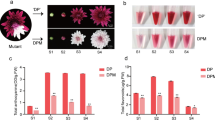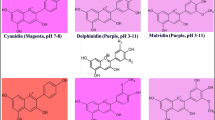Abstract
The prominent protein producing workhorse Trichoderma reesei secretes a typical yellow pigment that is synthesized by a gene cluster including two polyketide synthase encoding genes sor1 and sor2. Two transcription factors (YPR1 and YPR2) that are encoded in the same cluster have been shown to regulate the expression of the sor genes. However, the physiological relevance of the yellow pigment synthesis in T. reesei is not completely clear. In this study, a yellow pigment hyper-producer OEypr1 and three yellow pigment non-producers, OEypr1-sor1, Δypr1, and OEypr2, were constructed. Their phenotypic features in mycelial growth, conidiation, cell wall integrity, stress tolerance, and cellulase production were determined. Whereas hyperproduction of the yellow pigment caused significant defects in all the physiological aspects tested, the non-producers showed similar colony growth, but improved conidiation, maintenance of cell wall integrity, and stress tolerance compared to the control strain. Moreover, in contrast to the severely compromised extracellular cellobiohydrolase production in the yellow pigment hyperproducer, loss of the yellow pigment hardly affected induced cellulase gene expression. Our results demonstrate that interfering with the yellow pigment synthesis constitutes an engineering strategy to endow T. reesei with preferred features for industrial application.
Similar content being viewed by others
References
Aghcheh, R.K., Németh, Z., Atanasova, L., Fekete, E., Paholcsek, M., Sándor, E., Aquino, B., Druzhinina, I.S., Karaffa, L., and Kubicek, C.P. 2014. The VELVET a orthologue VEL1 of Trichoderma reesei regulates fungal development and is essential for cellulase gene expression. PLoS ONE 9, e112799.
Bischof, R.H., Ramoni, J., and Seiboth, B. 2016. Cellulases and beyond: the first 70 years of the enzyme producer Trichoderma reesei. Microb. Cell Fact. 15, 106.
Derntl, C., Guzmán-Chávez, F., Mello-De-Sousa, T.M., Busse, H.J., Driessen, A.J.M., Mach, R.L., and Mach-Aigner, A.R. 2017. In vivo study of the sorbicillinoid gene cluster in Trichoderma reesei. Front. Microbiol. 8, 2037.
Derntl, C., Rassinger, A., Srebotnik, E., Mach, R.L., and Mach-Aigner, A.R. 2016. Identification of the main regulator responsible for synthesis of the typical yellow pigment produced by Trichoderma reesei. Appl. Environ. Microbiol. 82, 6247–6257.
Deshpande, M.V., Eriksson, K.E., and Pettersson, L.G. 1984. An assay for selective determination of exo-1,4,-β-glucanases in a mixture of cellulolytic enzymes. Anal. Biochem. 138, 481–487.
El-Elimat, T., Raja, H.A., Figueroa, M., Swanson, S.M., Falkinham, J.O. 3rd, Lucas, D.M., Grever, M.R., Wani, M.C., Pearce, C.J., and Oberlies, N.H. 2015. Sorbicillinoid analogs with cytotoxic and selective anti-Aspergillus activities from Scytalidium album. J. Antibiot. 68, 191–196.
Fonseca, L.M., Parreiras, L.S., and Murakami, M.T. 2020. Rational engineering of the Trichoderma reesei RUT-C30 strain into an industrially relevant platform for cellulase production. Biotechnol. Biofuels 13, 93.
Gupta, V.K., Kubicek, C.P., Berrin, J.G., Wilson, D.W., Couturier, M., Berlin, A., Filho, E.X.F., and Ezeji, T. 2016. Fungal enzymes for bio-products from sustainable and waste biomass. Trends Biochem. Sci. 41, 633–645.
Harned, A.M. and Volp, K.A. 2011. The sorbicillinoid family of natural products: isolation, biosynthesis, and synthetic studies. Nat. Prod. Rep. 28, 1790–1810.
Hitzenhammer, E., Büschl, C., Sulyok, M., Schuhmacher, R., Kluger, B., Wischnitzki, E., and Schmoll, M. 2019. YPR2 is a regulator of light modulated carbon and secondary metabolism in Trichoderma reesei. BMC Genomics 20, 211.
Keshavarz, B. and Khalesi, M. 2016. Trichoderma reesei, a superior cellulase source for industrial applications. Biofuels 7, 713–721.
Li, C., Lin, F., Sun, W., Yuan, S., Zhou, Z., Wu, F.G., and Chen, Z. 2018. Constitutive hyperproduction of sorbicillinoids in Trichoderma reesei ZC121. Biotechnol. Biofuels 11, 291.
Lv, X., Zheng, F., Li, C., Zhang, W., Chen, G., and Liu, W. 2015. Characterization of a copper responsive promoter and its mediated overexpression of the xylanase regulator 1 results in an induction-independent production of cellulases in Trichoderma reesei. Biotechnol. Biofuels 8, 67.
Lynd, L.R., Weimer, P.J., van Zyl, W.H., and Pretorius, I.S. 2002. Microbial cellulose utilization: fundamentals and biotechnology. Microbiol. Mol. Biol. Rev. 66, 506–577.
Mach, R.L., Schindler, M., and Kubicek, C.P. 1994. Transformation of Trichoderma reesei based on hygromycin-B resistance using homologous expression signals. Curr. Genet. 25, 567–570.
Mandels, M. 1985. Applications of cellulases. Biochem. Soc. Trans. 13, 414–416.
Martinez, D., Berka, R.M., Henrissat, B., Saloheimo, M., Arvas, M., Baker, S.E., Chapman, J., Chertkov, O., Coutinho, P.M., Cullen, D., et al. 2008. Genome sequencing and analysis of the biomassdegrading fungus Trichoderma reesei (syn. Hypocrea jecorina). Nat. Biotechnol. 26, 553–560.
Maskey, R.P., Grün-Wollny, I., and Laatsch, H. 2005. Sorbicillin analogues and related dimeric compounds from Penicillium notatum. J. Nat. Prod. 68, 865–870.
Meng, J., Wang, X., Xu, D., Fu, X., Zhang, X., Lai, D., Zhou, L., and Zhang, G. 2016. Sorbicillinoids from fungi and their bioactivities. Molecules 21, 715.
Miller, G.L. 1959. Use of dinitrosalicylic acid reagent for determination of reducing sugar. Anal. Chem. 31, 426–428.
Monroy, A.A., Stappler, E., Schuster, A., Sulyok, M., and Schmoll, M. 2017. A CRE1-regulated cluster is responsible for light dependent production of dihydrotrichotetronin in Trichoderma reesei. PLoS ONE 12, e0182530.
Nakari-Setälä, T., Aro, N., Kalkkinen, N., Alatalo, E., and Penttilä, M. 1996. Genetic and biochemical characterization of the Trichoderma reesei hydrophobin HFBI. Eur. J. Biochem. 235, 248–255.
Ram, A.F.J. and Klis, F.M. 2006. Identification of fungal cell wall mutants using susceptibility assays based on Calcofluor white and Congo red. Nat. Protoc. 1, 2253–2256.
Singh, A., Taylor, L.E. 2nd, Vander Wall, T.A., Linger, J., Himmel, M.E., Podkaminer, K., Adney, W.S., and Decker, S.R. 2015. Heterologous protein expression in Hypocrea jecorina: a historical perspective and new developments. Biotechnol. Adv. 33, 142–154.
Wang, L., Lv, X., Cao, Y., Zheng, F., Meng, X., Shen, Y., Chen, G., Liu, W., and Zhang, W. 2019. A novel transcriptional regulator RXE1 modulates the essential transactivator XYR1 and cellulase gene expression in Trichoderma reesei. Appl. Microbiol. Biotechnol. 103, 4511–4523.
Zhang, W., Kou, Y., Xu, J., Cao, Y., Zhao, G., Shao, J., Wang, H., Wang, Z., Bao, X., Chen, G., et al. 2013. Two major facilitator superfamily sugar transporters from Trichoderma reesei and their roles in induction of cellulase biosynthesis. J. Biol. Chem. 288, 32861–32872.
Zhang, F., Li, J.X., Champreda, V., Liu, C.G., Bai, F.W., and Zhao, X.Q. 2020. Global reprogramming of gene transcription in Trichoderma reesei by overexpressing an artificial transcription factor for improved cellulase production and identification of Ypr1 as an associated regulator. Front. Bioeng. Biotechnol. 8, 649.
Zhang, Y.H.P. and Lynd, L.R. 2004. Toward an aggregated understanding of enzymatic hydrolysis of cellulose: noncomplexed cellulase systems. Biotechnol. Bioeng. 88, 797–824.
Zheng, F., Cao, Y., Lv, X., Wang, L., Li, C., Zhang, W., Chen, G., and Liu, W. 2017. A copper-responsive promoter replacement system to investigate gene functions in Trichoderma reesei: a case study in characterizing SAGA genes. Appl. Microbiol. Biotechnol. 101, 2067–2078.
Zhou, Q., Xu, J., Kou, Y., Lv, X., Zhang, X., Zhao, G., Zhang, W., Chen, G., and Liu, W. 2012. Differential involvement of β-glucosidases from Hypocrea jecorina in rapid induction of cellulase genes by cellulose and cellobiose. Eukaryot. Cell 11, 1371–1381.
Acknowledgments
This work is supported by grants from the National Key Research and Development Program of China (2019YFA-0905700), National Natural Science Foundation of China (31770047, 31970029, and 31670040), and Major basic research projects of Natural Science Foundation of Shandong Province (ZR2019ZD19).
Author information
Authors and Affiliations
Corresponding author
Ethics declarations
We have no conflicts of interest to report.
Additional information
Supplemental material for this article may be found at http://www.springerlink.com/content/120956.
Electronic supplementary material
Rights and permissions
About this article
Cite this article
Zhang, W., An, N., Guo, J. et al. Influences of genetically perturbing synthesis of the typical yellow pigment on conidiation, cell wall integrity, stress tolerance, and cellulase production in Trichoderma reesei. J Microbiol. 59, 426–434 (2021). https://doi.org/10.1007/s12275-021-0433-0
Received:
Revised:
Accepted:
Published:
Issue Date:
DOI: https://doi.org/10.1007/s12275-021-0433-0




